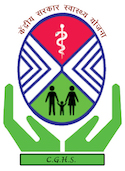Are Your Tremors Associated with Parkinson’s Disease?

Parkinson’s disease (PD) is a degenerative neurological disorder that affects the body’s nervous system. Deep inside the brain, the dopamines stop connecting the messages from one part to another part. This disease mainly impacts the motor skills of the body. Motor skills are- movement-related actions.
Shaking usually occurs uncontrollably in this disease and is therefore known as a distinct tremor. These tremors are temporary, however, the person may experience constant shaking of his hands, head, legs and other body organs. Many can be so strong as to hinder moving or normal daily functioning in one’s life.
Even today, Parkinson’s disease has no known direct cause with no treatment discovered for it yet. Parkinson’s disease is manageable using medicines that boost dopamine levels in one’s brain such as Levodopa. Apart from that, physical therapies and exercises can also be used to control symptoms of AD and to ease them. Nevertheless, it is still unknown to medical practitioners whether such techniques could slow down the development of this illness.
One should always seek to see the doctor before making any decisions whatsoever about what will be the most appropriate way of handling his or her situation considering that there are individuals who may not even have Parkinson’s but some symptoms associated to it like stiffness and fatigue. See a neurosurgeon or neurologist if you suspect that you have PD. Other related conditions that have comparable manifestations should be ruled out by performing other tests.
Understanding Parkinson’s Pathology
While doctors are still unsure of what causes Parkinson’s disease researchers discovered that a number of factors which preclude one to PD include being old, having families with cases of PD as well genes. Your risk of having MS increases to approximately 20 – 50% if you have a first-degree relative who already has the disease. Moreover, this risk goes higher if both parents are also affected with the condition. The exact reason why genetic mutation causes neuronal death, leading up to Parkinson’s disease is not yet known by scientists. There exist several theories including one according to which some dopamine levels decline with age thus making other people more genetic susceptible. More specifically, your body tends to slow down in production of dopamine with age. Therefore the cells that produce neurotransmitters in the brain of an individual will start dying, resulting in the depletion of neurotransmitter.
Furthermore, age is yet another significant determinant of Parkinson’s disease because you become more vulnerable as you grow. However, sporadic occurrences have been recorded among the adults less than forty years of age and most patients detected at around fifty or sixty. The older one is when these symptoms start showing up, usually the worse it becomes as time goes by. Individuals with PD developing at late stages of life are more likely to benefit from therapeutic interventions than individuals developing early.
How Parkinson’s Disease Tremors are Unique?
However, one should appreciate that Parkinson’s disease tremors vary from other types of tremors. This happens in one part of the body but usually on one side at a time. Moreover, these PD tremors are composed of another characteristic referred to as shaking or trembling that manifests all through the body as well. However, such diseases as essential tremors are likely to develop throughout two sides of a person’s body and bring about irregular quivers. The following are ten distinctions to differentiate the Parkinson’s disease tremors-
- Both hands tremble.
- Both tremors occur on one side of the body alternating times.
- This tremor is progressive and can involve the head, neck, or even the facial muscles and/or voice box.
- Stress increases tremor.
- Tremors are usually relieved by motion. For instance, if you raise your hands upwards it will halt for some time before resuming after some minutes or seconds.
- They occur in one side and improve after motion but deteriorate either upon sleep or late in the night, generally in the nighttime.
- Tremor is generally constant during active movements, resting state and in varying positions.
- Its tremor would be much slower compared to essential tremors that occur at 6–8 Hz (approximation). The frequency of tremor in parkinsons is 4-6Hz.
- When you are writing you can observe tremor much better – because of that the physicians have named it “the pill-rolling” sign, because it reminds the process of a pastry chef rolling the cake dough into an extremely thin layer and making various cutters.
Among the common patients’ symptoms of Parkinson’s disease are slowness of movement, rigidity, postural instability, gait disturbances. A case of slurred vocalic cords also leads to a hoarse voice and speech may be similarly affected.














